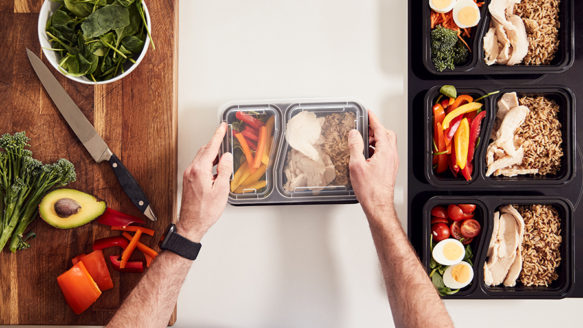
Save Money on Back to School Shopping
Learning how to save money on back to school shopping has never been more important. With the cost of living in Alberta and across Canada, the financial environment continues to be difficult for many families. With the cost of borrowing still high, households may find their expenses growing and their spending money shrinking. This could mean less money available for important expenses like back-to-school shopping. As such, it’s critical for parents to be smart with their savings during this time. Shopping for school supplies, clothing, and other needed items should involve careful budgeting, comparison shopping, and seeking out deals or discounts where possible. It’s also a good time to educate kids about the value of money and instill frugal spending habits. By taking a thoughtful and strategic approach to back-to-school shopping, families can lessen the impact on their budgets.
So, with children going back to school, what can parents do to save money on school shopping? In this blog post, we will provide 10 steps to help your children get back to school on a budget.
Back to school budgeting as a teachable moment

Before we list our steps below, there is an important point to be made about the opportunities for learning and growth during these financially difficult times. When you are budgeting for back to school, you can make this process a teachable moment for your children.
What is a teachable moment? Well, in the classroom, when something surprising happens, the teacher may use that event as an opportunity to teach the students something valuable. For example, if a fire alarm interrupted a lesson, the teacher could use that as a time to educate the children on fire safety. Similarly, as you budget for back to school, you can use this as an opportunity to teach your children about money. Often, children learn better when they can apply their knowledge directly to something happening in their lives. Back-to-school shopping is an excellent opportunity to teach your kids about budgeting and managing their money. Throughout this blog post, you’ll find free downloadable resources to get your kids involved in saving.
Now let’s jump into some useful tips to help you save money on your back to school shopping.
10 Ways to Save Money on Back to School Shopping
- Understand school supply needs and wants
- Make a budget for back to school shopping
- Don’t take your kids shopping!
- Pay with cash
- Start saving for next school year right away
- Reuse and Recycle
- Shop Sales and Use Coupons
- Buy in Bulk
- Swap and Share
- Use Loyalty Programs and Money-Saving Apps
Before you start budgeting and thinking about money, we recommend reviewing school supply lists to determine needs and wants. This can also help reduce buyer’s remorse because you’re not buying extras that aren’t necessary. It’s crucial that you have a good understanding of what your child needs for school, versus what they want for school. For example, they might want a brand-new backpack, but that’s not the same as needing a new calculator. Usually, the school will send a back-to-school supply list home to parents listing the items that students need for the new school year, but if not, give them a call to find out. For kids returning to school in the Fall, we recommend looking through school supplies from the previous year to see which supplies can be used again.
Here we have our first teachable moment! Understanding the difference between needs and wants is a fundamental part of any curriculum on financial education. We teach it in our own programs and have provided a worksheet for 6 to 7 year olds to help them understand needs and wants. Once your child has completed this exercise, get them to write down their wants and needs for the upcoming school year.

OK, now we get to the most important step in any financial planning – the budget! Understanding how much money you have to spend, and how much things are going to cost, is the foundation onto which everything else rests. When it comes to budgeting for back to school, it will help to list the most important things first. Your results from step 1 will help here, make sure you are accounting for needs before wants.
Teaching your kids how to budget is arguably more important than many of the things they might learn at school. I certainly wish I was taught a little more budgeting and a little less algebra. Although not specifically set up for back school budgeting, our editable youth spending plan is aimed at school students aged 13-17. If your child is younger than that, feel free to go through the spending plan with them. This worksheet on spending plan vocabulary might be useful.

So, you’ve listed your child’s needs and wants for going back to school and you’ve worked out a budget together. If your budget is tight, the best way to save money on school supplies may be to shop without the kids.
IF you have to take the kids with you, you may have a good opportunity to give them some extra responsibility, and see how they handle making financial decisions.
If your budget allows for it or if there is budget leftover after buying the essential school supplies, involve your kids in purchasing decisions. Give your kids a ‘back to school’ allowance plus a little extra.
Give them a short manageable list of items to buy for going back to school and tell them that if they manage to buy everything in the budget with the money available, they can choose to spend the remaining amount on something they want. This will teach them to be resourceful, look for deals and find intelligent ways to save money.
It’s important to remember that your own financial decisions are setting an example for your children. Paying with cash will help you stay within the budget you set. If your kids see you putting everything on credit cards, they’ll remember this. Credit is a slippery slope and it’s always best to spend money you have, rather than money you don’t. Teaching your children to use a cash only budget is a valuable outlook that will stay with them into their adult years.
We understand that times are tight, and if things are going on credit cards, then don’t beat yourself up about it. However, if those credit card bills are piling up and becoming a dark cloud in your life, make sure you reach out to one of our counsellors for a free credit counselling session.
If you can’t use cash for back to school shopping this year, then you could set a financial goal to use cash next year. The best way to do this, is to start saving right away. Don’t wait until next year to start saving, look at your budget, take inflation into account and think about how much you are going to need for next year.
Use this final step as another teachable moment. Sit down with your children and ask what they would like to be able to buy for school next year. Tell them you will be doing the same exercises next year and that if they want to make sure they can get those brand-new sneakers or that stylish new backpack, then they need to start saving their pocket money right away.
Look around your home for items that can be reused. This can include anything from last year’s school supplies to hand-me-down clothes from older siblings. Also, many items can be recycled, like using old notebooks as scrap paper. This not only saves money but also provides an opportunity to teach kids about the importance of reusing and recycling.
Keep an eye out for back-to-school sales, which often start in late July and run through August. Many stores offer significant discounts on school supplies, clothing, and electronics. Also, make use of coupons and discount codes. Many retailers have online coupons that can be applied at checkout for additional savings. Combining sales with coupons can result in substantial savings.
For items that you know your child will need throughout the school year, such as pencils, paper, and notebooks, buying in bulk can be a cost-effective strategy. Many wholesale clubs and office supply stores offer bulk purchase discounts. Buying in bulk not only saves money in the long run but also ensures that you have supplies on hand throughout the school year.
Consider organizing a school supply swap with friends, family, or neighbours. This can be especially helpful for items that are lightly used but no longer needed, such as last year’s backpacks or outgrown uniforms. Swapping items can save money and reduce waste. Additionally, sharing bulk purchases with other families can help everyone save on costs.
Sign up for loyalty programs at stores where you frequently shop for school supplies. Many stores offer points or discounts that can add up to significant savings over time.
Additionally, consider using money-saving apps to help you save money on your purchases by providing cashback and notifying you of available discounts. These savings can quickly accumulate, reducing the overall cost of your back-to-school shopping.
Money Mentors’ Financial Education

We hope we provided you with some valuable steps that you can take when shopping for back to school supplies to help alleviate some of the financial stresses that come from the current cost-of-living crisis. We also hope you learned some strategies to teach your children about money.
As a non-profit, a large part of what Money Mentors does is provide free financial education. We have a number of courses online that can help you understand money better, and if you’d like to continue to learn about ways to teach your kids about money, then we would recommend the course Enrich your Kids, which you can take now for free by clicking the link.
Thanks for reading. If you know anyone else who might find this blog post useful, then please share it with them. And for more tips on back to school shopping check out this great interview on back to school budgeting with a Money Mentors debt counsellor.
Frequently Asked Questions
When is the best time to shop for back-to-school supplies to save money?
The best time to shop for back-to-school supplies is usually during late July and August when many stores have sales. However, keep an eye on stores year-round as they often clear out old inventory at discounted prices.
Is it cheaper to shop for school supplies online or in stores?
This can depend on a variety of factors including the store, the specific item, and any current sales or promotions. Some online platforms might offer lower prices or additional discounts, while physical stores might have clearance sales. Compare prices from different sources before making a purchase.
What are some school items that are often cheaper to buy in bulk?
Items that are often used in large quantities, such as pencils, pens, notebooks, and paper, are often cheaper to buy in bulk. Other items like glue sticks, highlighters, and folders can also be more cost-effective when purchased in larger quantities.
Have questions?
Need more information or want to talk to an accredited financial counsellor for peace of mind? Let us help.
Call 1-888-294-0076 or book an appointment. It’s free for all Albertans.





